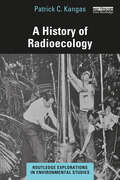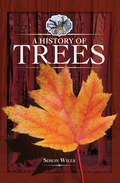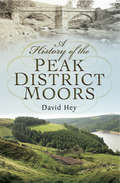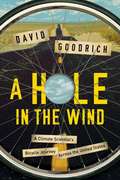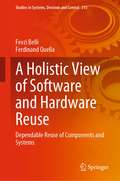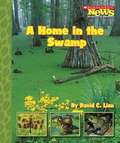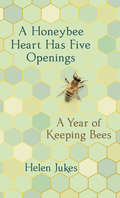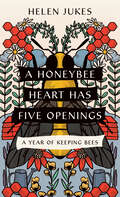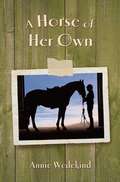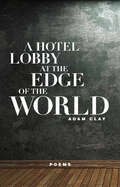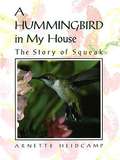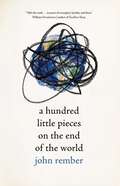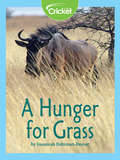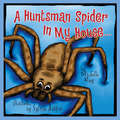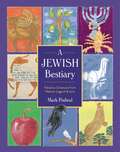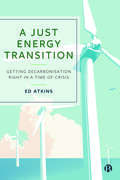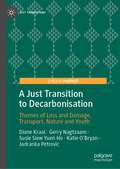- Table View
- List View
A History of Radioecology (Routledge Explorations in Environmental Studies)
by Patrick C. KangasThis book presents a history of radioecology, from World War II through to the critical years of the Cold War, finishing with a discussion of recent developments and future implications for the field. Drawing on a vast array of primary sources, the book reviews, synthesizes and discusses the implications of the ecological research supported by the Atomic Energy Commission (AEC) of the United States government, from World War II to the early 1970s. This was a critical period in the history of ecology, characterized by a transition from the older, largely descriptive studies of communities of plants and animals to the modern form of the science involving functional studies of energy flow and mineral cycling in ecosystems. This transition was in large part due to the development of radioecology, which was a by-product of the Cold War and the need to understand and predict the consequences of a nuclear war that was planned but has never occurred. The book draws on important case studies, such as the Pacific Proving Grounds, the Nevada Test Site, El Verde in Puerto Rico, the Brookhaven National Laboratory and recent events such as the nuclear disasters at Chernobyl and Fukushima. By revisiting studies and archived information from the Cold War era, this book offers lessons from the history of radioecology to provide background and perspective for understanding possible present-day impacts from issues of radiation risks associated with nuclear power generation and waste disposal. Post-Cold War developments in radioecology will be also reviewed and contrasted with the AEC-supported ecology research for further perspectives. This book will be of great interest to students and scholars of radioecology, environmental pollution, environmental technology, bioscience and environmental history.
A History of Trees
by Simon WillsMake Arbor Day every day with little known and intriguing facts about the plants that populate our forests, give us shade, and clean our air. Have you ever wondered how trees got their names? What did our ancestors think about trees, and how were they used in the past? This fascinating book will answer many of your questions, but also reveal interesting stories that are not widely known. For example, the nut from which tree was predicted to pay off the UK&’s national debt? Or why is Europe&’s most popular pear called the &“conference&”? Simon Wills tells the history of twenty-eight common trees in an engaging and entertaining way, and every chapter is illustrated with his photographs. Find out why the London plane tree is so frequently planted in our cities, and how our forebears were in awe of the magical properties of hawthorn. Where is Britain&’s largest conker tree? Which tree was believed to protect you against both lightning and witchcraft? The use of bay tree leaves as a sign of victory by athletes in ancient Greece led to them being subsequently adopted by many others—from Roman emperors to the Royal Marines. But why were willow trees associated with Alexander Pope, Napoleon Bonaparte, and Samuel Johnson? Why did Queen Anne pay a large sum for a cutting from a walnut tree in Somerset? Discover the answers to these and many other intriguing tales within the pages of this highly engrossing book.
A History of the Peak District Moors
by David Hey&“A superb new book . . . explores the history of Britain&’s first National Park from the Stone Age to the modern day . . . lavishly illustrated.&”—Reflections Magazine The moors of the Peak District provide some of the finest walking country in England. The pleasure of rambling across them is enhanced by a knowledge of their history, ranging from prehistoric times and the middle ages to their conversion for grouse shooting and the struggle for the &“right to roam&” in modern times. This distinctive landscape is not an untouched, natural relic for it has been shaped by humans over the centuries. Now it is being conserved as part of Britain&’s first National Park; much of it is in the care of The National Trust. The book covers all periods of time from prehistory to the present, for a typical moorland walk might take in the standing stones of a prehistoric stone circle, a medieval boundary marker, a guide stoop dated 1709, the straight walls of nineteenth-century enclosure, a row of Victorian grouse butts, a long line of flagstones brought in by helicopter, and very much more besides. &“This is no &‘desk-based study&’ but the product of a lifetime of living, working and researching in or immediately adjacent to the moors.&”—The Local Historian &“David writes with a contagious enthusiasm. This generously illustrated book roams amongst the best—and lesser-known—moorland features . . . a guide par excellence.&”—Peak Advertiser &“Few tomes can have been quite as comprehensive as David&’s. Within these pages are Romans and Vikings, railways and canals, ramblers and World War Two soldiers.&”—The Star (Sheffield)
A Hole in the Wind: A Climate Scientist's Bicycle Journey Across The United States
by David GoodrichAn epic bicycle journey across the American hinterland that explores the challenges of climate change alongside a diverse array of American voices. After a distinguished career in climate science as the Director of the UN Global Climate Observing System in Geneva, David Goodrich returned home to the United States to find a nation and a people in denial. Concerned that the American people are willfully deluded by the misinformation about climate that dominates media and politics, David thought a little straight talk could set things right. As they say in Animal House, he decided that "this calls for a stupid and futile gesture on someone's part, and I'm just the guy to do it." Starting on the beach in Delaware, David rode his bike 4,200 miles to Oregon, talking with the people he met on the ultimate road trip. Along the way he learned a great deal about why climate is a complicated issue for many Americans and even more about the country we all share. Climate change is the central environmental issue of our time. But A Hole in the Wind is also about the people Dave met and the experiences he had along the way, like the toddler's beauty pageant in Delaware, the tornado in Missouri, rust-belt towns and their relationship with fracking, and the mined-out uranium ghost town in Wyoming. As he rides, David will discuss the climate with audiences varying from laboratories to diners to elementary schools. Beautifully simple, direct, and honest, A Hole in the Wind is a fresh, refreshing ride through a difficult and controversial topic, and a rich read that makes you glad to be alive.
A Holistic View of Software and Hardware Reuse: Dependable Reuse of Components and Systems (Studies in Systems, Decision and Control #315)
by Ferdinand Quella Fevzi BelliThis book focuses on software reuse and the chances, dependability tests and recommendations for best reuse practice. A short introduction of the Ecodesign of hardware is given combined with the latest update of relevant EU legislation and standardization. It also describes the combination of different states of software in a E&E system in order to guarantee dependability of the product to be resold.
A Home In The Swamp
by David C. LionHave you ever visited a swamp? It's warm in a swamp, and the ground is wet. Swamps are home to many interesting plants and animals! This book explores the swamp while helping young readers build their vocabulary.
A Honeybee Heart Has Five Openings: A Year of Keeping Bees
by Helen JukesAn inspiring, up-close portrait of tending to a honeybee hive—a year of living dangerously—watching and capturing the wondrous, complex universe of honeybees and learning an altogether different way of being in the world."As strange, beautiful, and unexpected, as precise and exquisite in its movings as bees in a hive. I loved it."--Helen Macdonald, author of H Is for Hawk A Honeybee Heart Has Five Openings begins as the author is entering her thirties and feeling disconnected in her life. Uneasy about her future and struggling to settle into her new house in Oxford with its own small garden, she is brought back to a time of accompanying a friend in London—a beekeeper—on his hive visits. And as a gesture of good fortune for her new life, she is given a colony of honeybees. According to folklore, a colony, freely given, brings good luck, and Helen Jules embarks on a rewarding, perilous journey of becoming a beekeeper. Jukes writes about what it means to &“keep&” wild creatures; on how to live alongside beings whose laws and logic are so different from our own . . . She delves into the history of beekeeping and writes about discovering the ancient, haunting, sometimes disturbing relationship between keeper and bee, human and wild thing. A Honeybee Heart Has Five Openings is a book of observation, of the irrepressible wildness of these fascinating creatures, of the ways they seem to evade our categories each time we attempt to define them. Are they wild or domestic? Individual or collective? Is honey an animal product or is it plant-based? As the author&’s colony grows, the questions that have, at first compelled her interest to fade away, and the inbetweenness, the unsettledness of honeybees call for a different kind of questioning, of consideration. A subtle yet urgent mediation on uncertainty and hope, on solitude and friendship, on feelings of restlessness and on home; on how we might better know ourselves. A book that shows us how to be alert to the large and small creatures that flit between and among us and that urge us to learn from this vital force so necessary to be continuation of life on planet Earth.
A Honeybee Heart Has Five Openings: A Year of Keeping Bees
by Helen JukesA Honeybee Heart Has Five Openings begins as Helen Jukes is entering her thirties and struggling to settle into her new job and home. Then friends gift her a colony of honeybees—a gift that, according to folklore, brings good luck—and Jukes embarks on the rewarding, perilous journey of becoming a beekeeper.Jukes writes about what it means to "keep" wild creatures and to live alongside beings whose laws of life are so different from our own. She delves into the history of beekeeping, exploring the ancient—and sometimes disturbing—relationship between keeper and bee, human and wild thing. And as her colony grows, the very act of beekeeping seems to open new perspectives, making her world come alive again. A beautifully wrought meditation on uncertainty and hope, feelings of restlessness and home, and how we might better know ourselves, A Honeybee Heart Has Five Openings shows us how to be alert to these small creatures flitting among us that are yet so vital a force for the continuation of life.
A Horse Called Dragon (Dragon #1)
by Lynn HallA fictional life of the real wild stallion, Dragon, who was taken from Mexico's Sierra Madre mountains to become one of the founding sires of the Pony of the Americas breed in the United States.
A Horse of Her Own
by Annie WedekindFourteen-year-old Jane Ryan has always dreamed of having a "horse of her own" -- but so long as she gets to ride her favorite school horse, Beau, at Sunny Acres farm, she's content. And this is the summer she means to try out for the advanced riding class. But just as camp begins, Jane receives heartbreaking news about Beau. She loses, not just her favorite horse, but also her chance to ride in the end-of-summer competition. When her trainer asks for her help with an out-of-control chestnut warmblood, Lancelot, a newcomer to the barn, she has no choice but to say yes. There's another new addition to the farm: Ben Reyes, the grandson of the barn's manager. As Jane struggles to go on without Beau, and to make Lancelot the great horse she believes him to be, her feelings for Ben, her relationships with the privileged group of girls she rides with, and her painful, joyous road to self-discovery all lead to a heart-pounding conclusion that is truly a new beginning. Only Jane's faith in Lancelot, and her own rediscovered skill and strength, can see her through the hard journey toward "a horse of her own".
A Hotel Lobby at the Edge of the World: Poems
by Adam Clay“At the edge of the world, you’ll want to have this book. The final lines of Adam Clay’s poem, ‘Scientific Method,’ have been haunting me for weeks.” —Iowa Press-CitizenThe distilled, haunting, and subtly complex poems in Adam Clay’s A Hotel Lobby at the Edge of the World often arrive at that moment when solitude slips into separation, when a person suddenly realizes he can barely see the place he set out from however long ago. He now sees he must find his connection back to the present, socially entangled world in which he lives. For Clay, reverie can be a siren’s song, luring him to that space in which prisoners will begin “to interrogate themselves.”Clay pays attention to the poet’s return to the world of his daily life, tracking the subtly shifting tenors of thought that occur as the landscape around him changes. Clay is fully aware of the difficulties of Thoreau’s “border life,” and his poems live somewhere between those of James Wright and John Ashbery: They seek wholeness, all the while acknowledging that “a fragment is as complete as thought can be.” In the end, what we encounter most in these poems is a generous gentleness—an attention to the world so careful it’s as if the mind is “washing each grain of sand.”“Poems that are in turn clear and strange, and always warmly memorable.” —Bob Hicok“These poems engage fully the natural world . . . even as they understand the individual’s exclusion from it.” —Publishers Weekly
A Hummingbird in My House
by Arnette HeidcampAnyone who has fallen under the spell of the hummingbird will treasure this lovable true story of a young ruby-throated hummingbird who becomes part of someone's household and life. 57 full-color photographs; 10 black-and-white drawings.From the Hardcover edition.
A Hundred Little Pieces on the End of the World
by John RemberWritten with clarity, tenacity, humor, and warmth, A Hundred Little Pieces on the End of the World attempts to find tolerable ethical positions in the face of barely tolerable events—and the real possibility of an intolerable future. It is a compelling, surprising, disturbing, and highly literate work of reportage and contemplation. It is both a collection of gentle-spirited wisdom and a rumination on ruin, as if distilled in equal measure from the spirits of Norman Maclean&’s A River Runs Through It and Cormac McCarthy&’s The Road.Through these ten essays, each further broken into ten smaller pieces, Rember examines the practical and ethical dilemmas of climate change, population, resource depletion, and mass extinction. At the same time, he never forgets those improbable connections between human beings that lead to moments of joy, empathy, and grace.
A Hunger for Grass
by Susannah Buhrman-DeeverThe wildebeests of the Serengeti follow the grass as it grows throughout the year.
A Huntsman Spider In My House . . .
by Michelle Ray“Delightful and charming . . . Deliver[s] a valuable lesson on treating all such creatures with respect, without falling into the trap of being preachy.” —Kiddiespace A Huntsman Spider in My House features a young girl concerned about the huge unwelcome guest in her room. Rather than reacting by immediately killing the spider, as commonly taught by society, she finds another way: She catches the Huntsman instead, and then releases it outside to let it live and contribute to the ecosystem of Australian fauna. The little girl’s actions show that insects are important, necessary, not so scary, and support the world too. “The young, nameless female protagonist of Sylvie Ashford’s charming book speaks in rhyme as she explains the habits of Huntsman Spiders to children as well as to the adults that read the book aloud . . . We thoroughly endorse educating young children to have more tolerance for the lower beasts.” —What’s That Bug? “The story follows her beautifully simplistic childlike thought process as she explores her feelings about it, and the ways in which the spider could be dealt with . . . It leaves you with a deep sense of satisfaction, and provides a practical fear-resolution solution to which kids of all ages can relate.” —Kiddiespace “Michelle Ray, author of A Huntsman Spider in My House, does a wonderful job weaving a story to teach young children not to be afraid.” —The Education Cafe
A Jewish Bestiary: Fabulous Creatures from Hebraic Legend and Lore
by Mark Podwal"Ask the beast and it will teach thee, and the birds of heaven and they will tell thee." —Job 12:7In the Middle Ages, the bestiary achieved a popularity second only to that of the Bible. In addition to being a kind of encyclopedia of the animal kingdom, the bestiary also served as a book of moral and religious instruction, teaching human virtues through a portrayal of an animal’s true or imagined behavior. In A Jewish Bestiary, Mark Podwal revisits animals, both real and mythical, that have captured the Jewish imagination through the centuries.Originally published in 1984 and called "broad in learning and deep in subtle humor" by the New York Times, this updated edition of A Jewish Bestiary features new full-color renderings of thirty-five creatures from Hebraic legend and lore. The illustrations are accompanied by entertaining and instructive tales drawn from biblical, talmudic, midrashic, and kabbalistic sources. Throughout, Podwal combines traditional Jewish themes with his own distinctive style. The resulting juxtaposition of art with history results in a delightful and enlightening bestiary for the twenty-first century.From the ant to the ziz, herein are the creatures that exert a special force on the Jewish fancy.
A Jewish Bestiary: Fabulous Creatures from Hebraic Legend and Lore
by Mark Podwal“Ask the beast and it will teach thee, and the birds of heaven and they will tell thee.” —Job 12:7In the Middle Ages, the bestiary achieved a popularity second only to that of the Bible. In addition to being a kind of encyclopedia of the animal kingdom, the bestiary also served as a book of moral and religious instruction, teaching human virtues through a portrayal of an animal’s true or imagined behavior. In A Jewish Bestiary, Mark Podwal revisits animals, both real and mythical, that have captured the Jewish imagination through the centuries.Originally published in 1984 and called “broad in learning and deep in subtle humor” by the New York Times, this updated edition of A Jewish Bestiary features new full-color renderings of thirty-five creatures from Hebraic legend and lore. The illustrations are accompanied by entertaining and instructive tales drawn from biblical, talmudic, midrashic, and kabbalistic sources. Throughout, Podwal combines traditional Jewish themes with his own distinctive style. The resulting juxtaposition of art with history results in a delightful and enlightening bestiary for the twenty-first century.From the ant to the ziz, herein are the creatures that exert a special force on the Jewish fancy.
A Just Energy Transition: Getting Decarbonisation Right in a Time of Crisis
by Ed AtkinsTo reduce emissions and address climate change, we need to invest in renewables and rapidly decarbonise our energy networks. However, decarbonisation is often seen as a technical project, detached from questions of politics and social justice. What if this is leading to unfair transitions, in which some people bear the costs of change while others benefit? In this timely and expansive book, Ed Atkins asks: are we getting decarbonisation right? And how could it be made better for people and communities? In doing so, this book proposes a different type of energy transition. One that prioritises and takes opportunities to do better – to provide better jobs, community ownership and improve people’s homes and lives.
A Just Transition to Decarbonisation: Themes of Loss and Damage, Transport, Nature and Youth (Just Transitions)
by Gerry Nagtzaam Jadranka Petrovic Diane Kraal Katie O’Bryan Susie Siew HoThis book provides researchers and policy-makers with legal avenues to enable a just transition to decarbonisation. The focus is on the United Nations themes of loss and damage, transport, nature and youth - across Australia and other economies - to significantly reduce CO2 emissions by 2030 and beyond. The four themes scaffold discussions about a just transition beyond the UN Climate Change Conference COP28 in Dubai with the specific issues addressed in this book serving as a starting point for future discussions.
A Keeper of Bees: Notes on Hive and Home
by Allison WallaceI was hooked. Call it adrenaline surge, call it honeybee venom in my veins-whatever the explanation, henceforth I would need these funky little critters in my life. Givers of sweet, thick honey, bringers forth of the fruits from trees and bushes and who knew what else, they also gave more food for thought than a body could know what to do with. -fromA Keeper of Bees Allison Wallace's devotion to honeybees and their amazing, intensely lived lives started years ago, when she was living in a cabin in the North Carolina woods. Ever since then, wherever she has called home, Wallace has kept company with bees. Now she gives us the honeybee in all its glory, dancing "the great, never fully knowable ecological dance," striving like other creatures and plants to be all it can be in its short life. With a philosopher's perception and a scientist's knowledge, Wallace interweaves the facts of honeybee biology with reflections on desire, intimacy, work, evolution, memory, and home. She shares the thrill of intimately observing thousands of busy bees cozily ensconced in their brilliantly designed, perfectly weatherproofed hive. She muses on the female workers' unceasing activity, and on the male drones' idleness as each awaits his acrobatic midair mating with the queen, followed by his instant death. She marvels at the cosseted queen, upon whom the future of the hive depends. From the Hardcover edition.
A Key for Identification of Rock-Forming Minerals in Thin Section
by Andrew J. BarkerStructured in the form of a dichotomous key, comparable to those widely used in botany, the mineral key provides an efficient and systematic approach to identifying rock-forming minerals in thin-section. This unique approach covers 150 plus of the most commonly encountered rock-forming minerals, plus a few rarer but noteworthy ones. Illustrated in full colour, with 330 plus high quality mineral photomicrographs from a worldwide collection of igneous, metamorphic, and sedimentary rocks, it also provides a comprehensive atlas of rock-forming minerals in thin-section.Commencing with a brief introduction to mineral systems, and the properties of minerals in plane-polarised and cross-polarised light, the mineral key also includes line drawings, tables of mineral properties and an interference colour chart, to further aid mineral identification. To minimise the chance of misidentification, and enable less experienced petrologists to use the key with confidence, the key has been arranged to prioritise those properties that are most easily recognised.Designed for simplicity and ease of use, it is primarily aimed at undergraduate and postgraduate students of mineralogy and petrology, but should also provide a valuable source of reference for all practising geologists dealing with rock thin sections and their interpretation.
A Kids Book About Climate Change: Kids Are Ready (A Kids Book)
by Zanagee Artis Olivia GreenspanExplore the impact of climate change and empower kids to be proactive to protect our world.This is a kid's book about climate change. Climate change is a topic that can be overwhelming for kids and grownups. So if you're looking for the best place to better understand the climate crisis, look no further!This book helps kids aged 5-9 understand what climate change means, giving them the power to make a difference. Learn the facts about climate change, explain what the state of our planet is, how it got there, and give them hope to fight for their future.A Kids Book About Climate Change features: - A large and bold, yet minimalist font design that allows kids freedom to imagine themselves in the words on the pages.- A friendly, approachable and empowering, kid-appropriate tone throughout.- An incredible and diverse group of authors in the series who are experts or have first-hand experience of the topic.Tackling important discourse together! The A Kids Book About series are best used when read together. Helping to kickstart challenging, empowering, and important conversations for kids and their grownups through beautiful and thought-provoking pages. The series supports an incredible and diverse group of authors, who are either experts in their field, or have first-hand experience on the topic. A Kids Co. is a new kind of media company enabling kids to explore big topics in a new and engaging way. With a growing series of books, podcasts and blogs, made to empower. Learn more about us online by searching for A Kids Co.
A King's Commander
by Dewey LambdinIt's 1793 and Alan Lewrie is now commander of HMS Jester, an 18-gun sloop. After handily thrashing the French at the Battle of the First of June, Lewrie sails into Corsica only to receive astonishing orders. He must lure his archenemy, French commander Guillaume Choundas, into battle and personally strike the malevolent spymaster dead. With Horatio Nelson as his squadron commander on one hand and a luscious courtesan who spies for the French on the other, Lewrie must pull out all the stops if he's going to live up to his own reputation and bring glory to the British Royal Navy.
A King's Cutter: A Nathaniel Drinkwater Novel (Nathaniel Drinkwater Novels)
by Richard WoodmanIt is 1792 and Nathaniel Drinkwater is back in the Royal Navy, this time appointed to the 12-gun cutter Kestrel, commanded by the inscrutable Madoc Griffiths. With the gathering menace of the French Revolution, he is involved in secret and dangerous operations off the French Coast, including the rescue of émigrés and the landing of agents.As Europe plunges deeper into war, Kestrel takes part in the struggle for supremacy in the Channel and Drinkwater has some sinister encounters with Edouard Santhonax, a man who is stirring up interest with British government agents.Through Drinkwater&’s initiative the network of intrigue is discovered, but the Royal Navy is paralyzed by mutiny. Will Kestrel have to stand alone between the Dutch Fleet and disaster? Events come to a climax at Camperdown, and in the aftermath of the bloody battle Drinkwater and his opponent come face to face.
A Kinkajou on the Town
by Rutherford MontgomeryBenny the kinkajou looked deceptively angelic—rather like a live teddy bear—when Tim persuaded his father to buy him for a pet. Tim soon discovered Benny's mischievous nature, but the little kinkajou's Houdini-like cleverness was not really tested until, because Tim was sent to boarding school, Benny was sent to the zoo. Determined to get back to his master, Benny escaped from his cage again and again. His search for Tim led him into some hilarious escapades, then into danger in the desert, and finally to a poignant reunion. The California desert, the rugged hill country around Santa Barbara, and the animals native to that part of the West are vividly described by one of America's great nature writers. In Benny the kinkajou, Rutherford G. Montgomery has created a particularly engaging animal character. Pencil drawings by Lorence Bjorklund perfectly portray the appealing characters and the beautiful natural setting of this fine story of the loyal friendship of a boy and his unusual pet.
